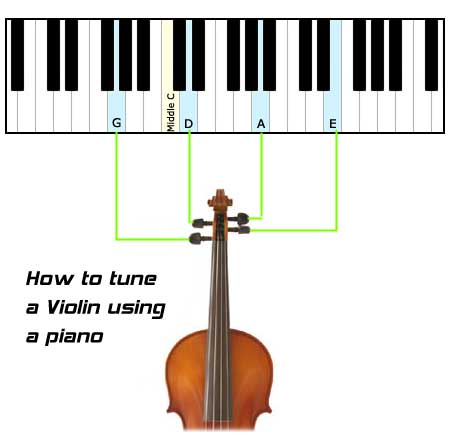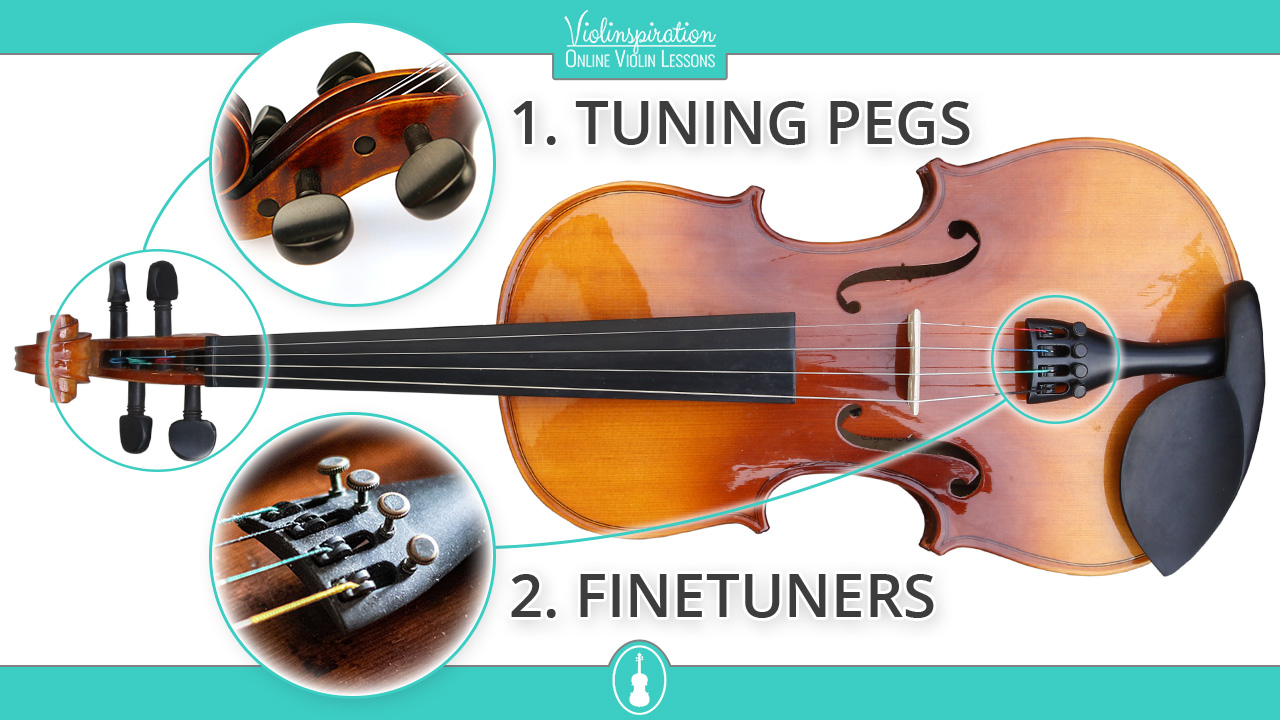Tuning a violin without a tuner might sound challenging. But it is possible with practice and patience.
In the meantime, don't forget to unlock a world of unlimited sound with Amazon Music Unlimited, where over 100 million songs wait at your fingertips. Whether you're working, relaxing, or fueling your creativity, the right track is always just one tap away. Elevate every moment with music that moves you.
For many beginners, tuning can be the hardest part of learning the violin. While electronic tuners are helpful, they are not always available. Luckily, you can tune your violin by ear. This skill not only sharpens your ear but also helps you understand your instrument better.
In this guide, we will explore different methods to tune your violin without a tuner. You will learn simple techniques that can make the process easier. By the end, you will feel more confident tuning your violin on your own. So, let’s dive into the basics of tuning without any tools.
Understanding Violin Strings
The violin has four strings. Each string has a unique name and pitch. Understanding these strings is essential for tuning your violin without a tuner.
Names Of Strings
The four strings on a violin are named G, D, A, and E. These strings are arranged from the lowest pitch to the highest pitch.
| String | Name |
|---|---|
| G | G (lowest pitch) |
| D | D |
| A | A |
| E | E (highest pitch) |
Standard Tuning Notes
In standard tuning, each string must match a specific note. Here are the standard tuning notes for each string:
- G String: G3
- D String: D4
- A String: A4
- E String: E5
Using these notes, you can tune your violin by ear. Listen to the pitch and adjust the string until it matches the note.
Using Reference Pitches
Use reference pitches to tune a violin by ear. Match each string’s sound to a known pitch, like a piano note. This method ensures accurate tuning without a tuner.
Tuning a violin without a tuner can be challenging. Using reference pitches can help. These pitches come from other instruments or tuning devices. This method ensures your violin sounds correct.Piano As A Reference
A piano is a great reference. It provides stable and accurate pitches. To start, find the note A on the piano. It’s usually the A above middle C. Play this note. Then, tune your A string to match it. Listen closely. Adjust the peg until the pitch matches. Next, move to the D string. Find the D note on the piano. Play it and tune your D string to match. Do the same for the G and E strings. Always compare the sound. Adjust until the pitches align.Tuning Fork Use
A tuning fork is another helpful tool. It provides a precise pitch. Tap the fork on a hard surface. Place the base on your violin’s body. This will amplify the sound. The fork usually gives an A note. Tune your A string to this pitch. Adjust the peg until the sounds match. Then, tune the other strings. Use the A string as your reference. Play the A and D strings together. Adjust the D string until it sounds right. Repeat for the G and E strings. Using a tuning fork is simple and effective. It ensures your violin is in tune. You get a clear and steady pitch. This helps you achieve the correct sound. “`Tuning By Ear
Tuning a violin without a tuner may seem hard. But with practice, it gets easier. Tuning by ear helps improve your musical skills. It allows you to connect deeply with your instrument.
Matching Pitches
Start with the A string. Find a reliable sound source for the A note. This could be a piano or another tuned instrument. Play the A note on the sound source. Then, play the open A string on your violin. Listen closely to the sound.
Adjust the peg until the pitch matches. Repeat this process with the D, G, and E strings. Use the A string as a reference for the other strings. Play double stops (two strings at once) to check their tuning.
Fine-tuning Techniques
After matching pitches, use the fine tuners. Fine tuners help make small adjustments. Turn the fine tuner clockwise to raise the pitch. Turn it counterclockwise to lower the pitch. Be gentle to avoid breaking a string.
Test your tuning by playing scales and simple songs. Listen for any off notes. Adjust as needed until the sound is clear.
Here’s a quick checklist for fine-tuning:
- Play each string individually.
- Use fine tuners for minor adjustments.
- Listen for clear and stable pitches.
- Check tuning regularly as you play.

Credit: www.get-tuned.com
Tuning With Harmonics
Tuning a violin without a tuner can be challenging. One effective method is tuning with harmonics. This technique uses natural resonances of the strings to achieve accurate tuning. It requires keen listening skills but provides precise results.
Identifying Harmonics
Harmonics are produced by lightly touching the string at specific points. These points divide the string into equal parts. Here’s how to find them:
- Touch the string lightly at the 12th fret. This divides the string in half.
- Touch the string lightly at the 7th fret. This divides the string into thirds.
- Touch the string lightly at the 5th fret. This divides the string into quarters.
You should hear a clear, bell-like tone at these points. These are the harmonics.
Using Harmonics For Tuning
Once you identify the harmonics, you can use them to tune the violin. Follow these steps:
- Play the harmonic on the A string at the 5th fret.
- Play the harmonic on the D string at the 7th fret.
- Compare the two tones. They should match.
- If they don’t match, adjust the D string until they do.
Repeat this process for other strings:
- Compare the D string (5th fret) with the G string (7th fret).
- Compare the A string (5th fret) with the E string (7th fret).
By using harmonics, you can tune your violin accurately without a tuner. This method trains your ear and improves your overall musicianship.
Double Stops Method
The Double Stops Method is a practical way to tune your violin without a tuner. This method involves playing two strings at once. It helps to hear the intervals between them. By adjusting the strings, you can achieve perfect fifths. This method can improve your ear training. It also makes your violin sound better.
Playing Double Stops
Start by playing the G and D strings together. Place your bow on both strings. Draw the bow smoothly across the strings. Listen to the sound they produce. They should create a harmonious interval. If the sound is off, you need to adjust.
Adjusting For Perfect Fifths
First, make sure the G string is in tune. Use a reference pitch if needed. Play the G and D strings together again. Turn the fine tuner on the D string. Adjust it until the interval sounds harmonious. Repeat the process for the D and A strings. Finally, tune the A and E strings the same way. Your violin should now be in tune.

Credit: violinspiration.com
Common Tuning Issues
Tuning a violin without a tuner can be tricky. Common tuning issues often arise and can frustrate even the most patient musicians. Understanding these issues helps in achieving the perfect pitch.
Dealing With Peg Slippage
Peg slippage is a common issue. The pegs loosen, causing the strings to go out of tune. To fix this, gently push the peg inward while turning it. This helps the peg stay in place. Peg compound can also help. It increases friction and keeps the pegs from slipping.
Strings Stretching
New strings often stretch. This can cause them to go out of tune quickly. To address this, tune the strings slightly higher than the desired pitch. Then gently pull the string upward and retune. Repeat this process until the string stabilizes. Over time, the strings will stretch less.
Maintaining Tuning
Keeping your violin in tune can be tricky without a tuner. It requires regular checks and awareness of environmental factors. Below are some helpful tips.
Regular Checks
To keep your violin in tune, check the pitch of each string regularly. This means at least once a day. You can use a piano, another tuned instrument, or a pitch pipe. Match the sound of your strings to these reference points.
Here is a simple table to help you:
| String | Note |
|---|---|
| G String | G |
| D String | D |
| A String | A |
| E String | E |
Use the fine tuners and pegs to adjust your strings. Make small adjustments. Tighten to raise the pitch. Loosen to lower the pitch. Always keep your violin in a safe place. Protect it from bumps and falls.
Environmental Factors
Environmental factors can affect your violin’s tuning. Temperature and humidity are key. Keep your violin in a stable environment. Avoid extreme temperatures. High heat can make the wood expand. Cold can make it contract. Both can affect tuning.
Humidity is also important. Dry air can make the wood shrink. Too much moisture can make it swell. Use a humidifier in dry places. Store your violin with a dampit or similar device in the case.
Keep your violin away from direct sunlight. This can cause temperature fluctuations. Store it in a room with stable conditions.

Credit: www.superprof.ca
Frequently Asked Questions
How Do I Tune A Violin By Ear?
Tuning a violin by ear involves listening to a reference note. Adjust each string to match the pitch. Start with the A string and tune the rest accordingly.
What Is The Best Way To Tune A Violin Without A Tuner?
Using a piano or another instrument as a reference is effective. Adjust each violin string to match the corresponding piano key.
Can Beginners Tune A Violin Without A Tuner?
Yes, beginners can tune a violin without a tuner. Listen carefully and match each string to a reference pitch. Practice improves accuracy.
How Often Should I Tune My Violin?
You should tune your violin every time you play. Changes in temperature and humidity can affect the tuning. Regular tuning ensures better sound quality.
Conclusion
Tuning a violin by ear can be challenging, but practice helps. Start with the A string, then adjust the others. Trust your ears and develop your skills over time. This method improves your musical ear and confidence. Don’t get discouraged if it’s hard at first.
Consistency is key. Keep practicing and soon tuning will become second nature. Your violin will sound better, and your playing will improve. Enjoy the process and keep making beautiful music.
{ “@context”: “https://schema.org”, “@type”: “FAQPage”, “mainEntity”: [ { “@type”: “Question”, “name”: “How do I tune a violin by ear?”, “acceptedAnswer”: { “@type”: “Answer”, “text”: “Tuning a violin by ear involves listening to a reference note. Adjust each string to match the pitch. Start with the A string and tune the rest accordingly.” } } , { “@type”: “Question”, “name”: “What is the best way to tune a violin without a tuner?”, “acceptedAnswer”: { “@type”: “Answer”, “text”: “Using a piano or another instrument as a reference is effective. Adjust each violin string to match the corresponding piano key.” } } , { “@type”: “Question”, “name”: “Can beginners tune a violin without a tuner?”, “acceptedAnswer”: { “@type”: “Answer”, “text”: “Yes, beginners can tune a violin without a tuner. Listen carefully and match each string to a reference pitch. Practice improves accuracy.” } } , { “@type”: “Question”, “name”: “How often should I tune my violin?”, “acceptedAnswer”: { “@type”: “Answer”, “text”: “You should tune your violin every time you play. Changes in temperature and humidity can affect the tuning. Regular tuning ensures better sound quality.” } } ] }
As an Amazon Associate, Cleanestor earns from qualifying purchases at no additional cost to you.

